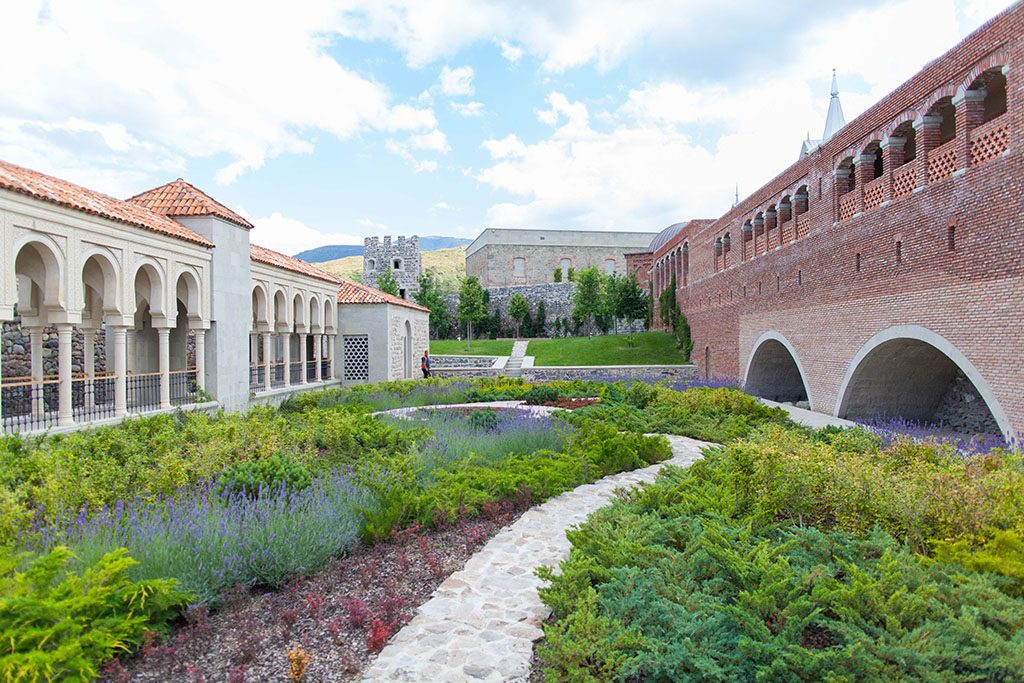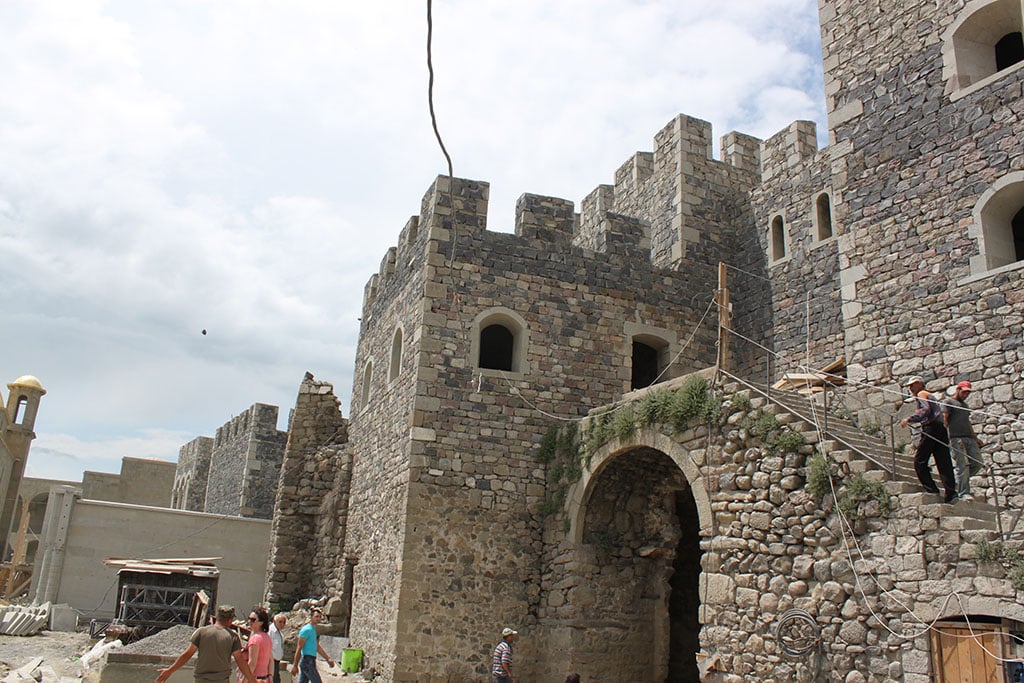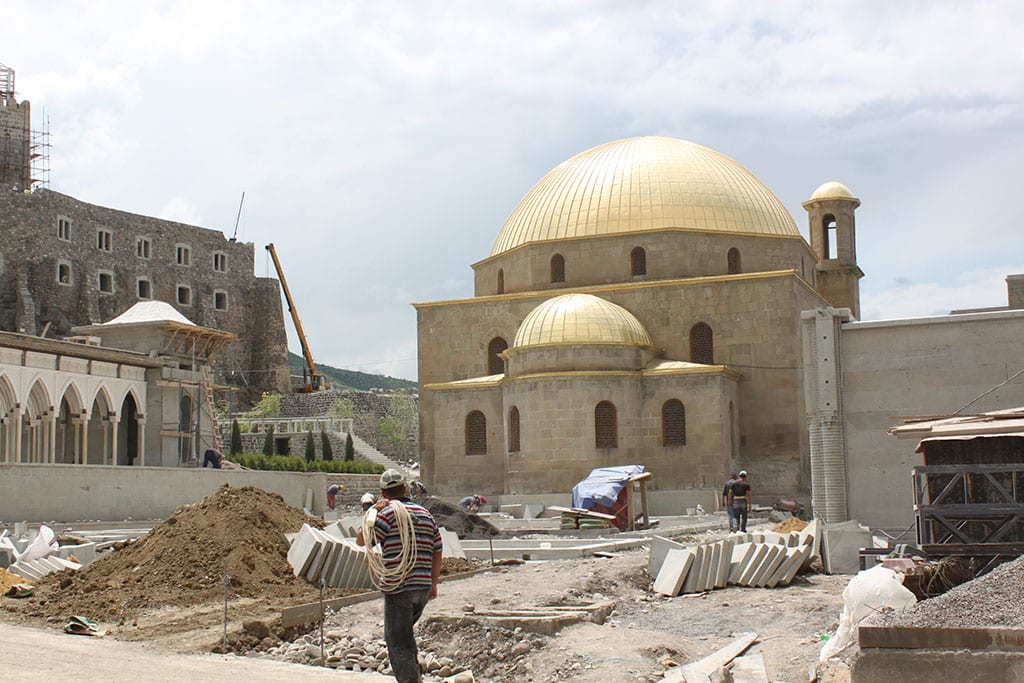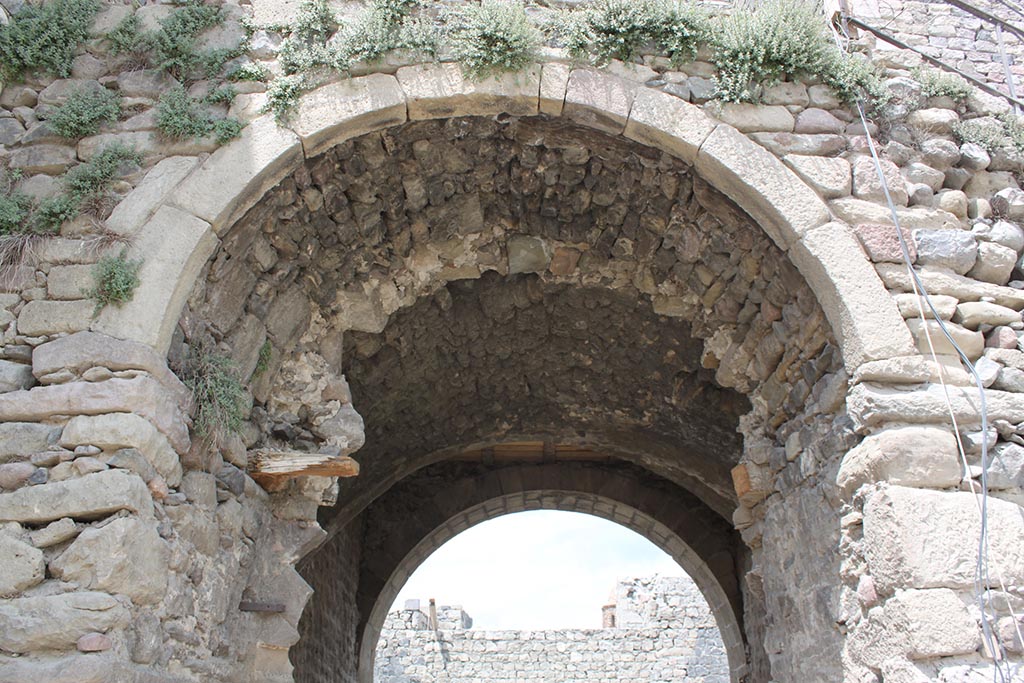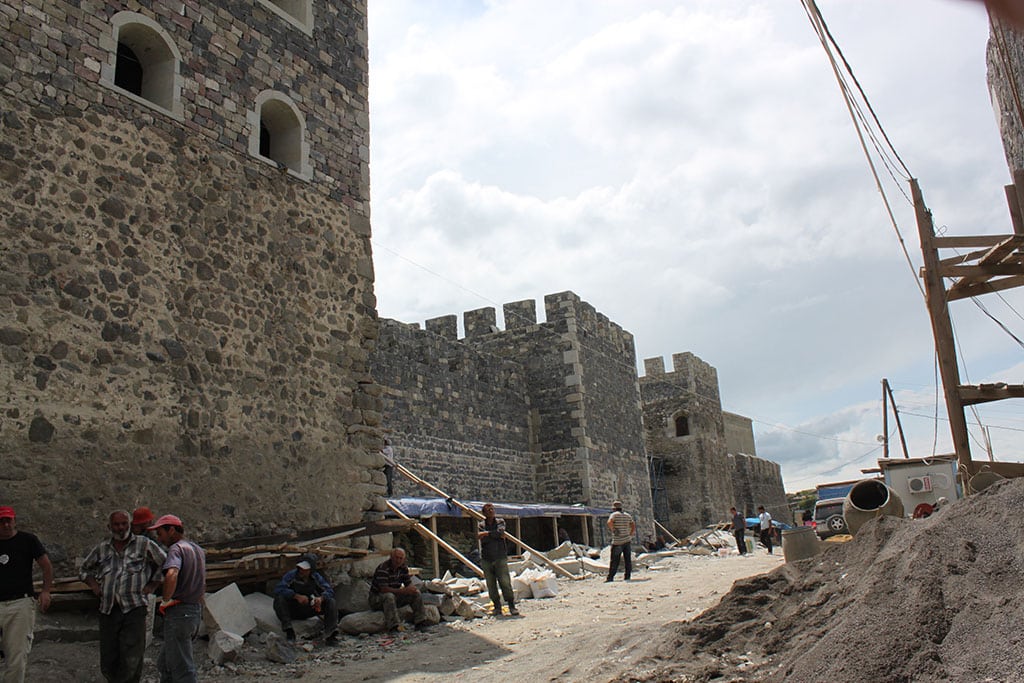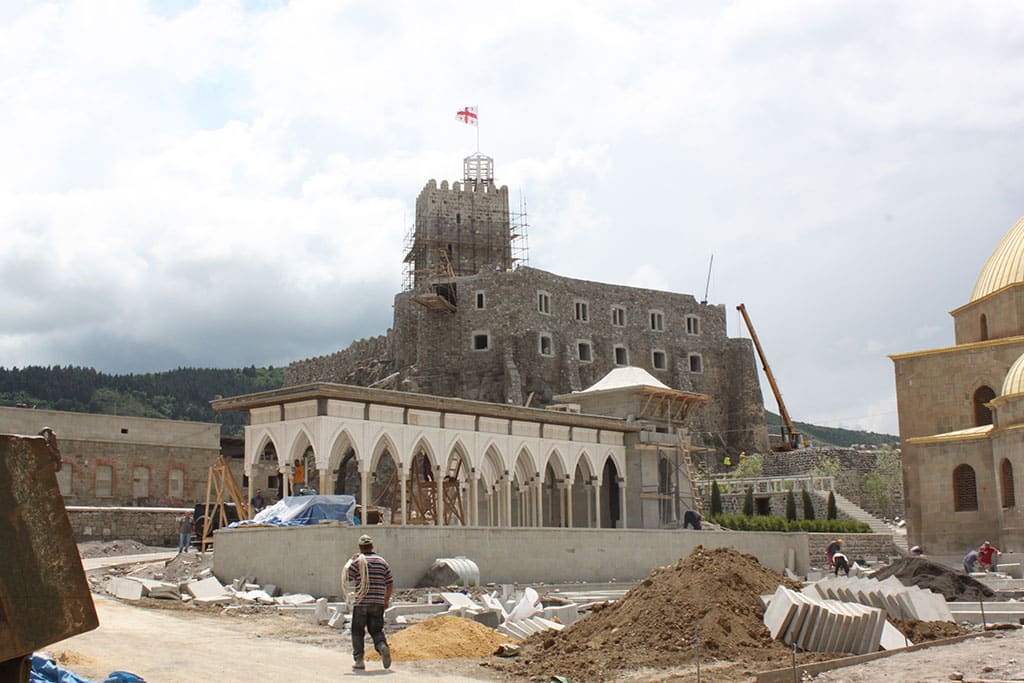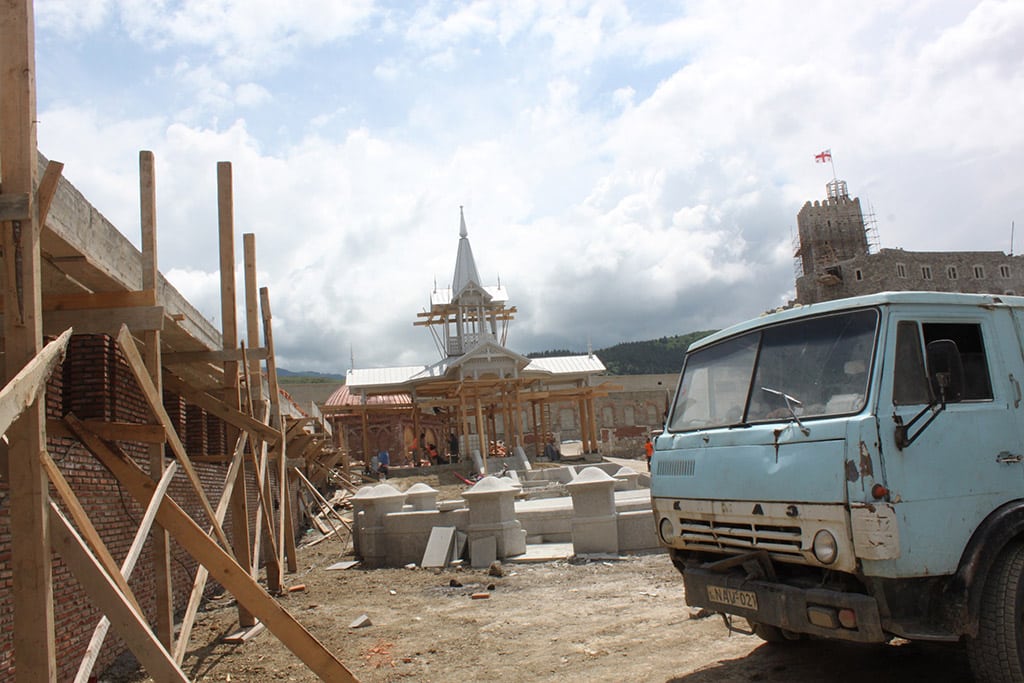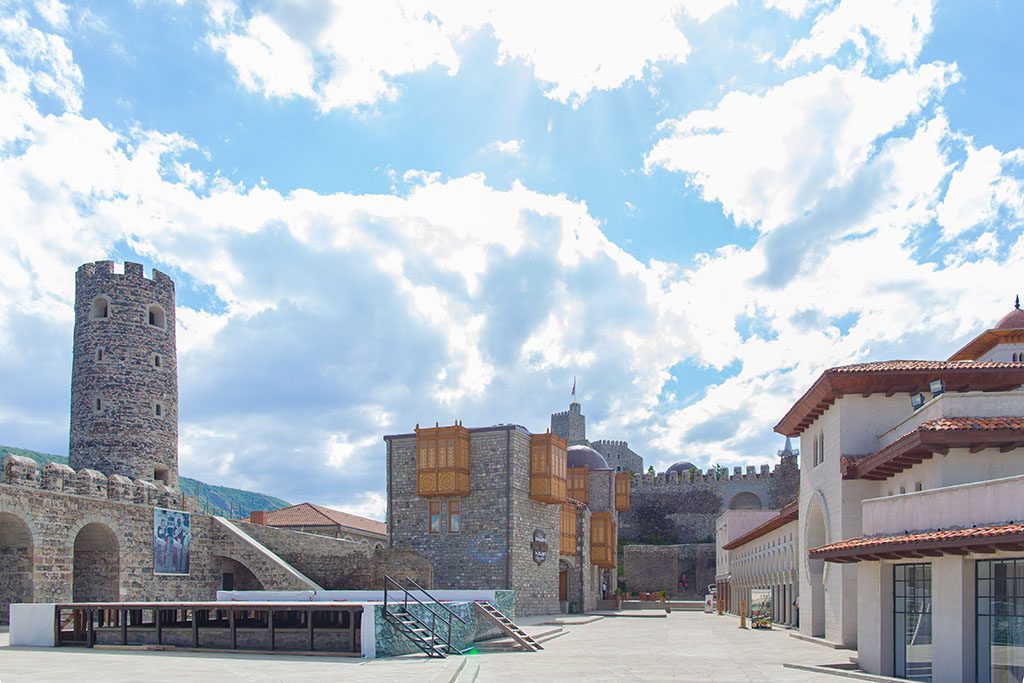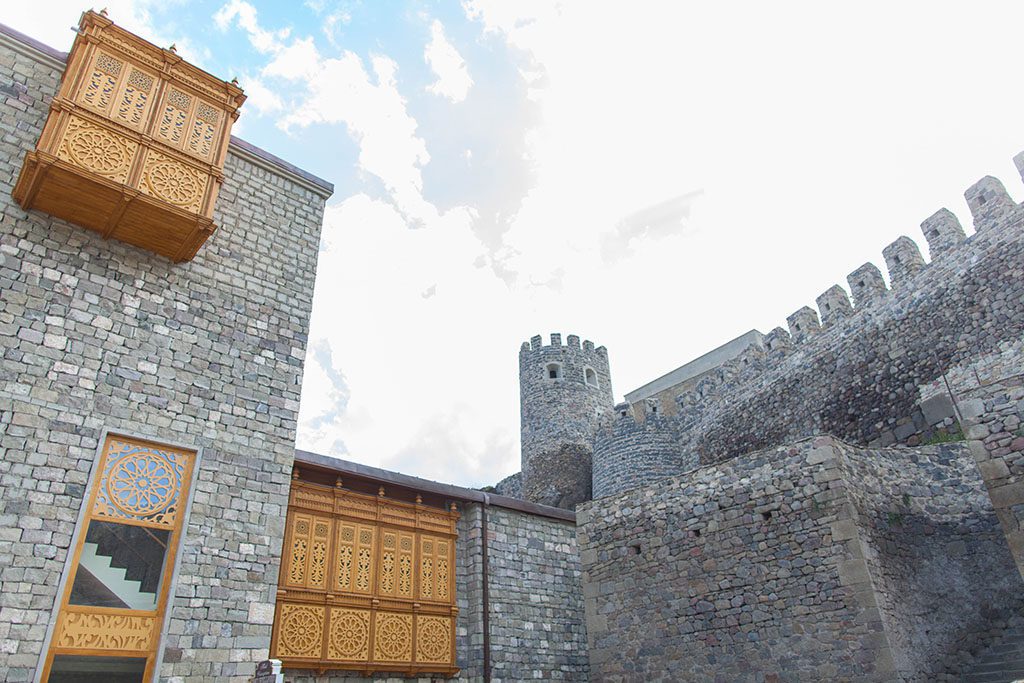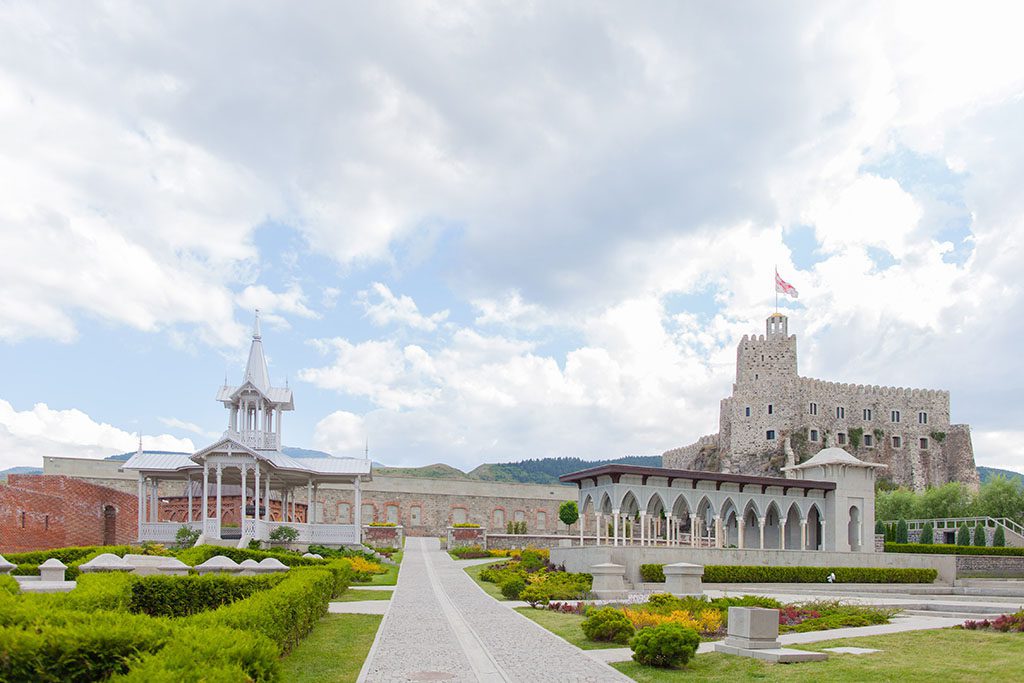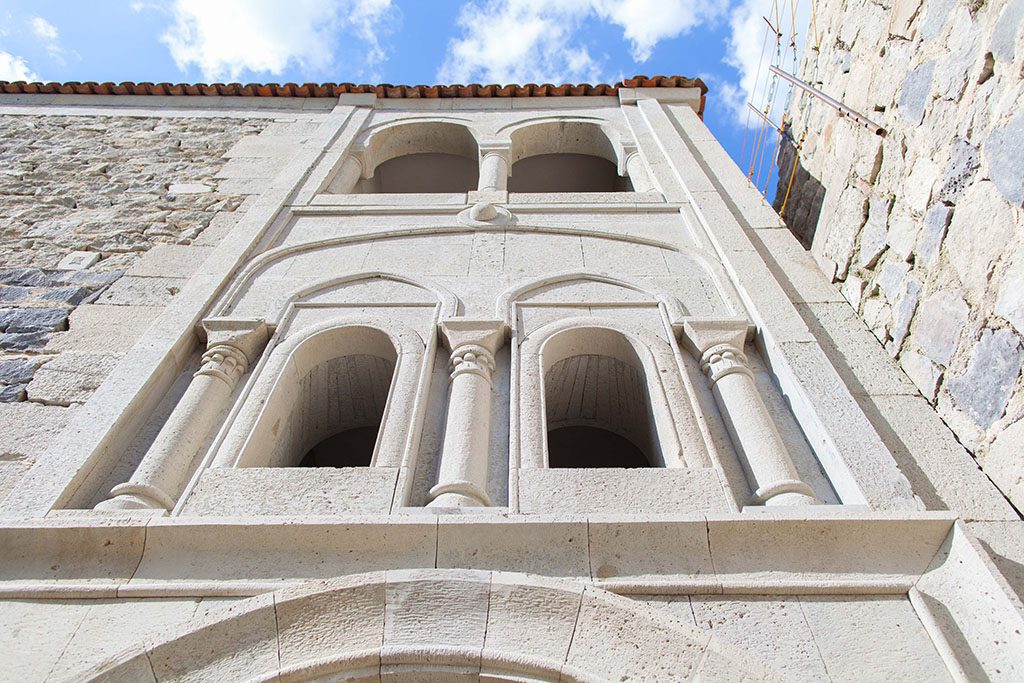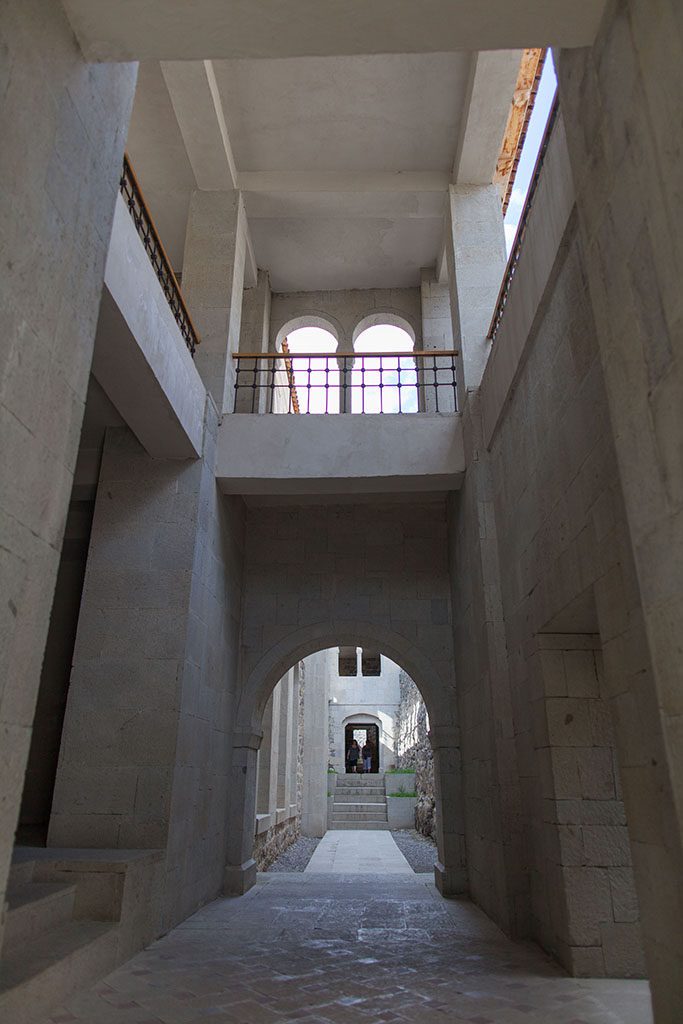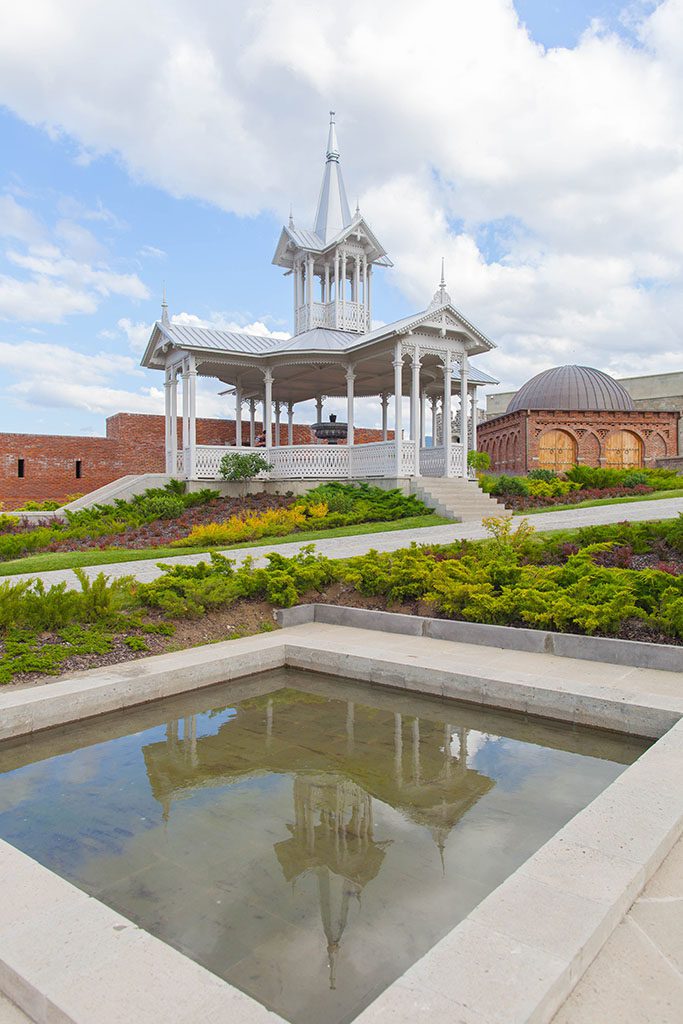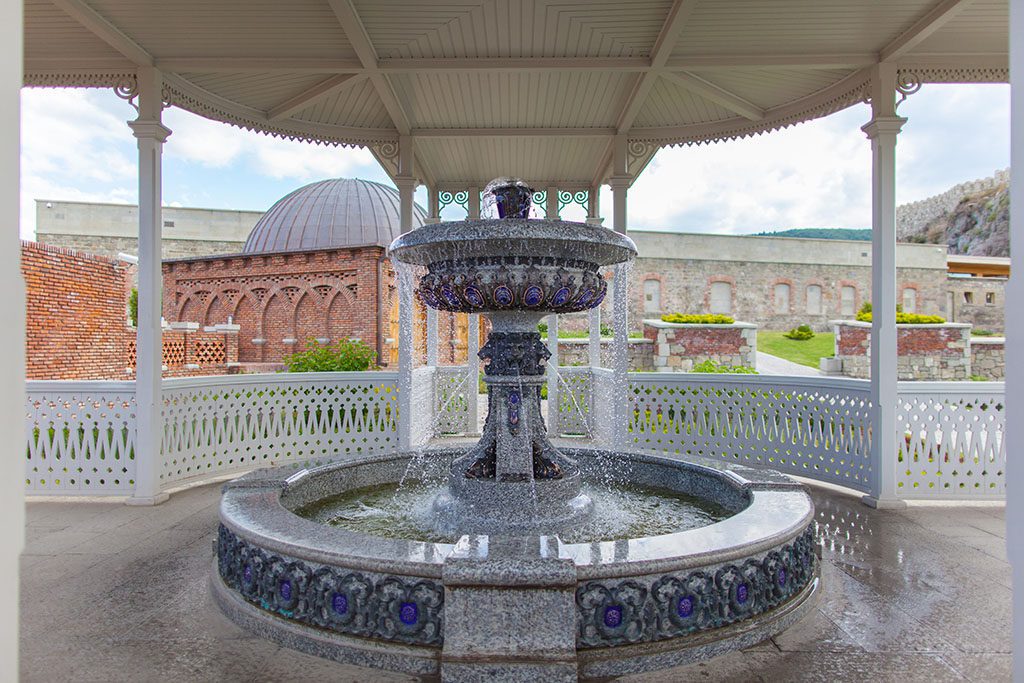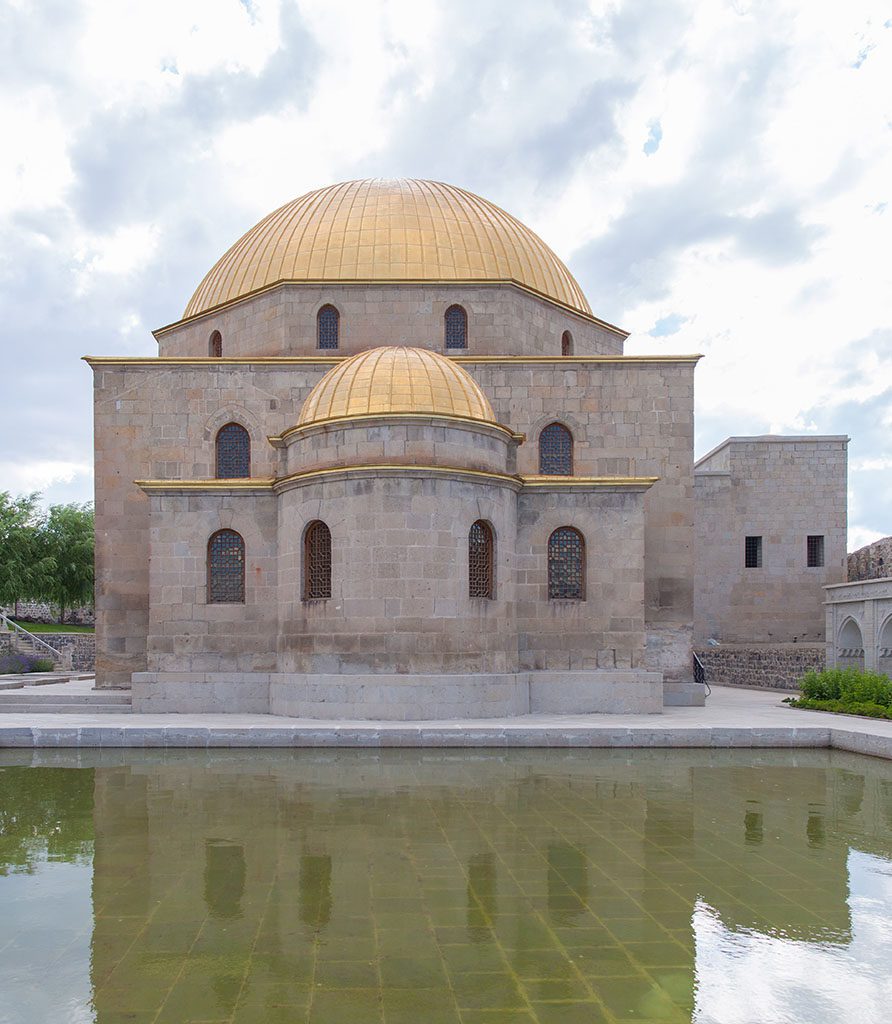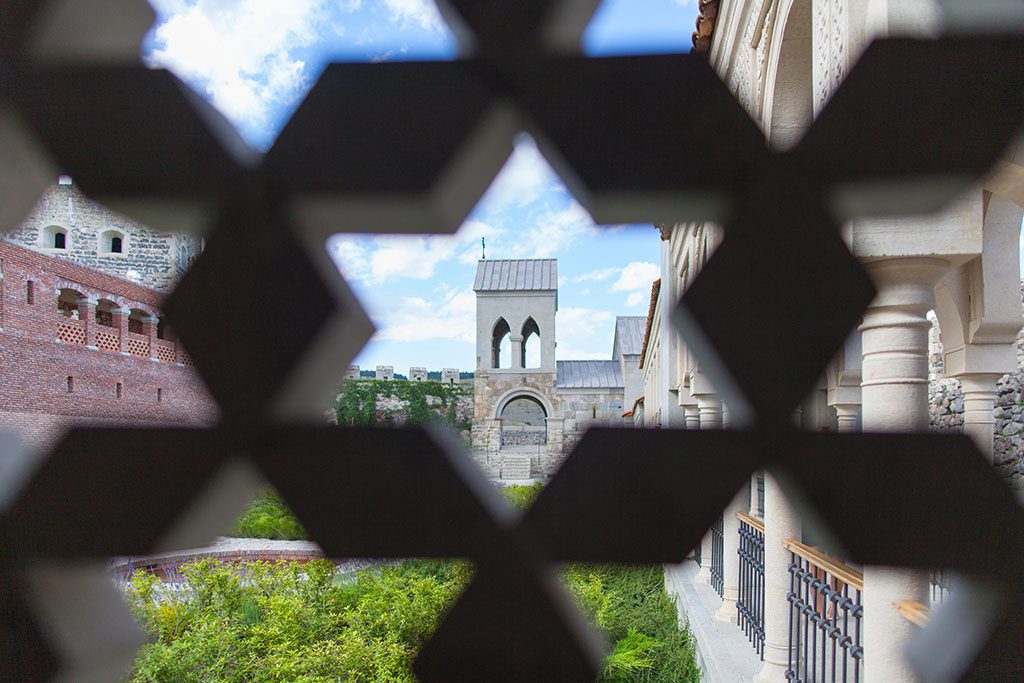Do you want to immerse yourself in the history of the glorious land of Samtskhe-Javakheti, touch ancient artifacts and get a lot of positive emotions? Then you need to visit the ancient fortification of Rabat in the city of Akhaltsikhe. This mighty, impregnable fortress has turned into a huge city, which occupies about 7 hectares and every meter of the territory hides many mysteries and surprises for tourists. Having arrived in Georgia, do not deprive yourself of the pleasure of getting acquainted with the ancient structure.
History of the fortress
The first mentions of the fortification date back to the 9th century, although at that time the structure was not such a grand building. It was a building intended for soldiers to stand guard, watching over the peace of the settlement, the walls were not high. Already in the 12th century, the famous princely family of Jakeli built their castle and fortress on this site. During this period, the fortification significantly increased in size, becoming an impregnable outpost in the south of Georgia.
The princes called their creation Akhaltsikhe, which literally translates as “New Fortress”. But in the 14th century, the fortification had to endure a tragic event – it was heavily damaged by the army of Tamerlane. In the middle of the 15th century, Khan Yakub (Mongol leader) raided Rabat, and at the end of the 16th century, the powerful Ottoman Empire captured the city and fortress. Rabat is a true symbol of Georgia, which was destroyed many times, but was still rebuilt, preserving the memory of its ancestors.
New life for Rabat fortress
This ancient structure received a “chance” for a new life during the reign of Georgian President M. Saakashvili. The politician initiated a large-scale reconstruction, and the government supported him.
The first work on the fortification territory began in the fall of 2011. A grandiose construction project unfolded on a territory of 7 hectares. At that time, the impregnable fortress was in a deplorable state – the main walls (central gates) were destroyed. Only a few buildings remained in satisfactory condition on the site. The territory was practically overgrown, and it was already difficult to discern the beauty of the ancient structure.
But this was not an easy construction project – special projects were developed for the reconstruction, designed to preserve the authenticity of the existing monumental buildings. Special materials were selected that would allow “repeating” ancient construction techniques. For example, instead of large pebbles on the walls, composite materials were used, very similar in structure.
The result – today in Rabat you will not see crumbling plaster, careless masonry and any construction “bloopers”. It was decided to build new structures in order to create a unique historical ensemble in the fortification and develop the fortress infrastructure. This is how the amazing Moorish gallery, the modern Rabat Hotel, shops and restaurants, carved gazebos and fountains appeared.
The peculiarity of the reconstruction is that it was not only global, but also took place in a very short time. By August 2012, all the work was completed, and a truly “New Fortress” was born in Akhaltsikhe, which exceeded all expectations.
The government spent more than 34 million lari (at that time about 15 million $) on the restoration of Rabat. M. Saakashvili managed to implement a grandiose project, which gave the state a new pearl, attracting tourists from all over the world.
If you came to this blessed land and did not visit Rabat, then you did not see modern Georgia! The fortress became a symbol of the country’s revival.
Worth a visit!
Rabat is very interesting for tourists not only from the point of view of architecture, here you can get acquainted with the rich heritage of Georgian and Turkish culture. The territory of the fortification is a kind of excursion into different eras. This is an Orthodox church and the oldest mosque in Georgia, amazing defensive structures and a museum of the Samtskhe-Javakheti region.
And if you get here in the evening, you will plunge into a real oriental fairy tale. The entire territory is illuminated by powerful spotlights and it seems that the fortress is hanging in the air! Magnificent fountains, numerous pools, unique panoramas and an exquisite aroma of lavender – the entire territory is buried in greenery, here you can wander for hours, completely forgetting about the bustle of the city.
The lower part of the fortress
This part of the structure can be visited for free. Huge walls and massive gates that lead into the “city” appear before your eyes. The territory greets tourists with clean paved paths, small areas, swimming pools, and invites you to sit in cozy cafes. There is also a young vineyard here, which has a stepped structure. The entire territory is very clean and convenient for tourists to walk.
The infrastructure of the fortification is also pleasing. In the lower part there is the Rabat Hotel with cozy comfortable rooms, its façade looks amazing – wooden carved balconies, stone walls. The price of a room is from 200 lari (73$).
There is also a restaurant of the same name, which is famous for its exquisite Georgian cuisine. 10 meters away there is a bar where you can relax on an open area, admiring the fortifications.
Be sure to visit the “KTW” store (wine sales). In addition to a chic selection of drinks (one of the best wine stores in Samtskhe-Javakheti), you will also be surprised by the interior – huge mirror domes under the ceiling, wooden furniture for guests, many display cases. Here you can buy a very rare type of wine – from rose petals, as well as champagne, real Georgian chacha, cognac and all kinds of wines.
The souvenir shop also attracts attention, here you can buy bowls and bottles for wine made of pure wax, magnificent jewelry made of natural stones and silver, icons and much more.
In the lower part, there is a tourist information office (1 Kharisshirashvili Street). Managers will be happy to share maps, sell tickets to the upper part of the fortress, tell you what is worth seeing first. Information is provided free of charge. The entire lower territory is not closed at night.
Upper Rabat
This is already a museum area, the cost of visiting is 18 lari ($6.5). For this money, you can walk around the fortification for an unlimited amount of time, take excellent photos and film. An excellent solution would be to hire a professional guide, they speak Russian well.
The upper part is separated from the lower part by a massive stone wall. There is always a guard at the entrance who will check for tickets and tell you where to go next.
Numerous stairs lead to the top, you can climb the towers along spiral staircases. All the buildings have a stepped structure, so be prepared to climb up all the time.
The fortress has 4 huge observation towers, which have spiral staircases and spacious observation platforms on the upper level. A stunning picture of the city and its surroundings opens up, the mountains are clearly visible. The walls of the towers inside are built of stones of different colors, below there are rooms where weapons were previously stored.
The upper part contains the main attractions that are definitely worth visiting. Tourists can relax in a magnificent snow-white gazebo, where they can drink water and enjoy the coolness of the fountain.
Ahmediye Mosque
This temple building was erected in the 18th century and is the center and “soul” of all of Rabat. The mosque is named after the legendary Ahmad Pasha. Today the building is empty, it is crowned with a huge gilded dome, which is compared to the dome of the Omar Mosque, which is located in Jerusalem. Inside the building you can see huge stones with ancient inscriptions, there are Muslim and Christian symbols. Right in the mosque there is an unusual exhibit – a stone chopping block on which the heads of enemies were chopped off. Traces of the axe blow are still visible.
At the beginning of the 19th century, the mosque was bombed by Russian troops, massive cannonballs knocked the crescent off the dome and left traces in the form of a scratch on the western part of the minaret. After the capture, the mosque was turned into an Orthodox church (Assumption), and the rich library was transported to St. Petersburg. At that time, this collection of books was considered the richest in the Muslim world.
Inside the building you will see a niche facing Mecca (southern wall). In the northern wall there is an exit to the stairs, it leads to the minaret, but you can’t get there – it is locked and barred.
Leaving the mosque and walking literally 5-10 meters to the left, you will see a small ancient building. Previously, it was used as a prison, where prisoners and captured warriors were kept. Small rooms used to be prison cells. Only the walls and numerous niches in them have survived here. If you go to the right of the mosque, you will find yourself in an amazing room. It is completely covered with wood, which is decorated with virtuoso carving. There are large wooden chests, a sofa and a chair made of natural material.
Christian temple
As soon as you climb to the top of the fortress, you will immediately see an ancient temple, which, according to some sources, was built back in 1578. The monumental structure has a bell tower, on its walls you can see ancient ornaments and inscriptions. And on the walls of the church you can see traces of bullets. There is no traditional altar here, instead there are huge stone slabs that divide the temple into two parts. The decoration is modest.
After leaving the building, you can admire the bizarre structures – stone “rams”. These are elongated sculptures that “guard” the temple, there are several such stone guards on the territory. Historians do not know exactly what culture to attribute them to. There is information that they were erected by Armenians, according to other sources, these are Azerbaijani artifacts. On the lawn around the temple there are large boulders with original ornaments and inscriptions.
Gallery
In the very center of the fortress complex you can admire the Moorish gallery. This colonnade consists of numerous refined arches that meet at the very top. The structure looks amazing, reminiscent of the entrance to an ancient castle, each column is decorated with refined carving. Today it is one of the most striking symbols of the fortress, which creates an atmosphere of the mysterious East.
The Citadel is the “peak” of the fortress
This grandiose structure occupies the western part of the ancient fortification. It is recognized not only as the highest point of the fortress, but also of the city of Akhaltsikhe. From here, a stunningly beautiful panorama of the settlement and its suburbs opens up. It is difficult to climb here, but it is worth it. A high tower was built in the Citadel, as well as a room where various exhibits are displayed – photographs, ceramics, household items inherent in the Meskhetian culture. This entire building resembles a house where the Meskhetians once lived.
It is in the Citadel that a special atmosphere reigns, which takes you back to the times when the Turks watched the approach of the columns of the Russian army, moving from the Northern Heights throughout the city.
Samtskhe-Javakheti Museum
A magnificent museum, which after restoration has become even more interesting for tourists.
A lot of amazing exhibits, ancient fossils and Turkish guns of various modifications. Unique artifacts (archaeological) of the Bronze and Stone Ages are collected on an area of 250-300 m. Only here you can see perfectly preserved Colchian bronze axes, which were discovered by archaeologists on the territory of Georgia. Of no less interest are the huge sabers, muskets, pistols, cannonballs. You can also admire the ancient dishes, which belong to different eras. The exhibits will tell you a fascinating story about the turbulent history of the formation of Southern Georgia and Meskheti.
The halls are spacious, semi-darkness reigns, making the excursion even more exciting. Photography is prohibited, many artifacts are simply damaged by flashes. Visiting is free, included in the price of purchased tickets for a walk in the upper part of Rabat.
The famous castle of the princes of Jakeli is located almost in front of the entrance to the museum. Having overcome the stone and iron stairs, you will climb to its roof and be able to see the city from above and the entire fortification of Rabat.
Picturesque ponds
In addition to the monumental buildings, charming stone ponds are spread out on the territory of the fortress. They will greet you at the entrance to the mosque, near the Moorish columns, in the quiet garden on the upper part. These artificial reservoirs have become a favorite place for tourists. During the day, the carved columns of the arches, the golden dome, the huge walls of the fortress are reflected in their waters, creating an amazing three-dimensional picture of the ancient fortification. At the bottom of the pools, many coins shine – this is a “gift” from tourists to the ancient fortress. Everyone tries to leave a coin and make a wish, which will definitely come true.
But it is not only the ponds that attract tourists. Huge bowls with trees growing in them, magnificent flowers, an amazing landscape of flower beds. It seems that you have entered some national park where rare species of plants are collected.
How to get to Rabat Fortress?
The main attraction of Akhaltsikhe is located in its very center. It is very convenient to get here from any end of the city, since the main highway of Tamarashvili Street is laid under the mountain itself. It is here under the fortress that there is a small square from where minibuses and buses around the city depart.
If you arrived in Akhaltsikhe by bus, you will immediately get to the city bus station. It is located directly under the ancient fortification. You only have to walk to the Rabati gate and the excursion begins. It is easy to get to the fortress from the right bank of Potskhovi – you need to go under the railway bridge and you will find yourself on the fortress mountain. The journey will take no more than 15 minutes.
Working hours
The entire lower territory of the fortress can be visited around the clock and for free. But the upper museum territory is open from 10:00 to 19:00. The museum closes its doors to tourists at 18:00.
You can admire the most grandiose and beautiful fortress of Georgia all year round. True, it is very hot in the summer (in July-August the temperature can reach 35C). Unique landscapes appear in the spring – flowers bloom, the air is filled with the aroma of herbs and mountain lavender. From April, a comfortable temperature of 25-28C sets in, allowing you to walk around the fortress for a longer time. No less breathtaking panorama here is also in the fall, when the mountains are already dressed in white caps, and the forests “burn” with scarlet and yellow.
The Rabati Fortress is an amazing landmark of Georgia, where you can immerse yourself in the history of this glorious state.
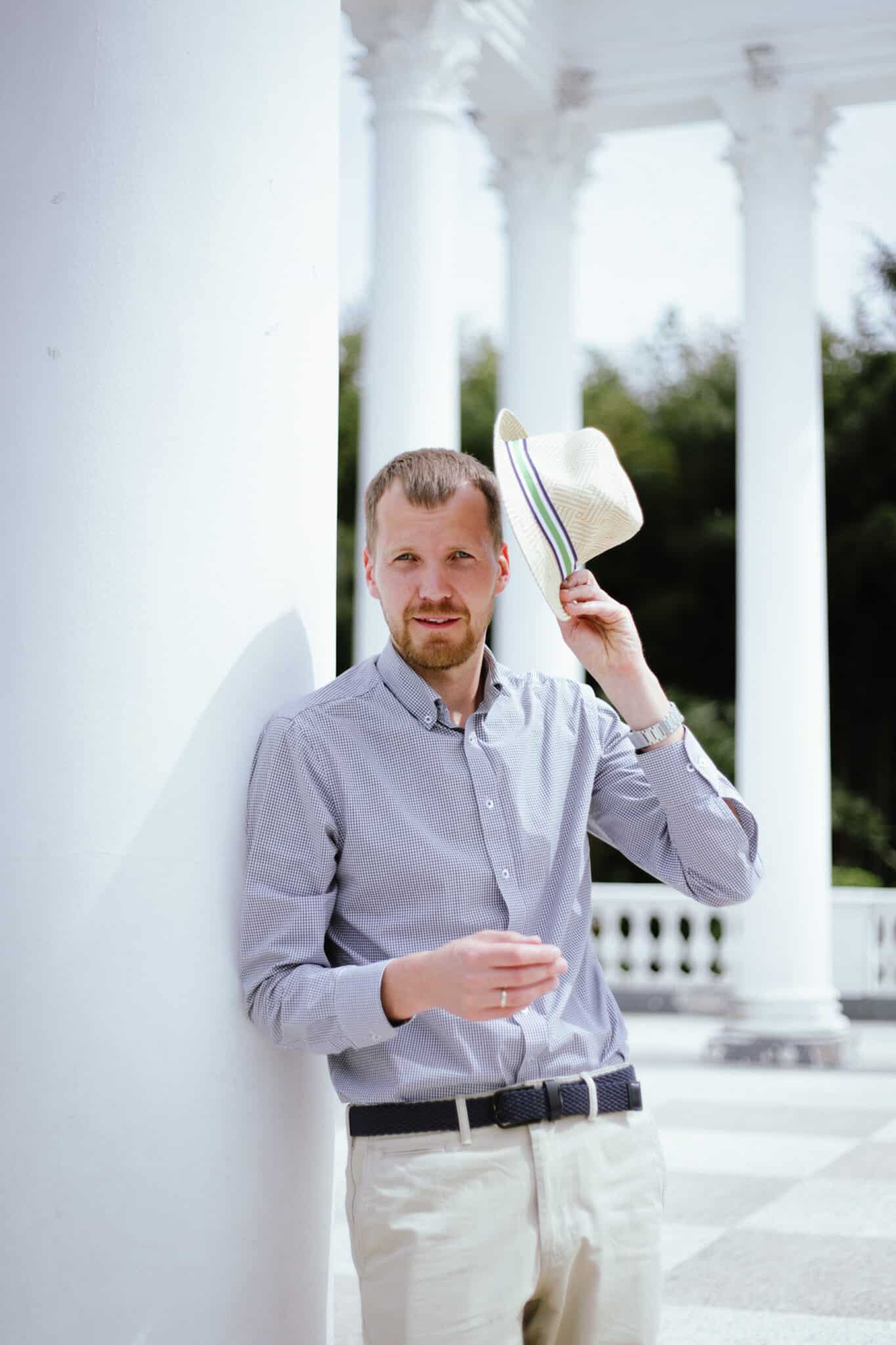
My name is Vitaly Kibitlevsky, I am a tour guide and creator of unique quests in Batumi. If you want to walk around the city with a fascinating storyteller or plunge into an exciting adventure, write to the mail: vitkibit@gmail.com
Find out more about me and my projects here


